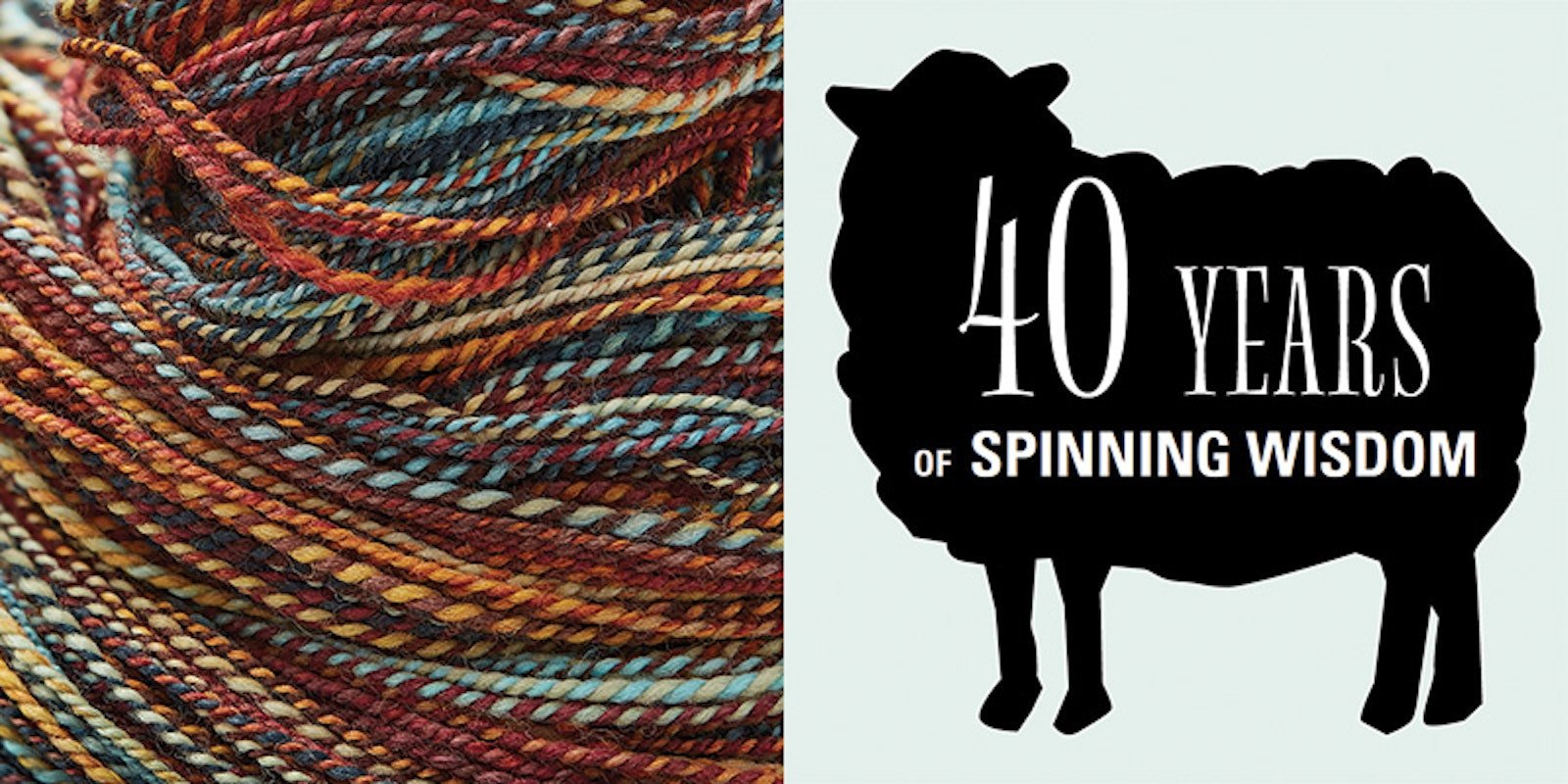Mining handspinning tips from 145 back issues ofSpin Off proved to be no small task! What’s the occasion?Spin Off_ just celebrated the big 4–0 with the Fall 2017 issue. Check out these nine nuggets of fiber wisdom. Do you have a favorite fiber tip from a past issue? Share it with us in the comments below._
How would you spin these locks of Romney, Lincoln, and Merino wool fiber? Photo by Joe Coca.
Fiber Tips
“Never buy an unskirted fleece. You are paying for parts of the fleece that are unsuitable for spinning.” —Beverly Horne, “Fleece in the Hands of a New Zealand Spinner.” 1978
“Spit is better than water for spinning linen, because the enzymes in your saliva react with the linen and help cement the little ‘split ends’ into the yarn.” —Cecilia Quinn, quoted in “Six of One, Half a Dozen of the Other.” 1981
“My own experience is that the most flawless yarn (thread?) possible is that spun from cotton directly out of the boll . . . Simply hold the unginned seed next to the moistened tip of a spindle, twirl and draw, leaving the more tenacious linters on the seed.” —Ella Baker, “Why Spin Cotton?” Summer 1985
“Closely examine the cuticle . . . of a wool fiber to quickly tell you which end is which. Gently slide your fingers over the lock in each direction. The cuticle will feel smooth as your fingers move toward the tip of the lock and rougher as your fingers move toward the cut end.” —Kate Larson, “Flicking and Combing Painted Locks.” Spring 2012
[envira-gallery slug="fiberspinoff40"]
Fiber Preparation Tips
“[S]ince damp wool will card more easily than dry wool, simply adding a wet towel to wool in a plastic bag and letting this sit for a period of time will increase the dampness of the wool and make carding easier.” —Brucie Adams, “Physical Characteristics of Wool Of Importance to Handspinners.” 1977
“I usually spin uncarded greasy fleece. Some teachers think there needs to be much preparation; I say don’t be a victim of the Colonial myth that you need to sit around and card. Just because you read something in a book doesn’t mean that it’s correct for every situation.” —Marilyn Jones, in “Six of One, Half a Dozen of the Other.” 1981
“As you blend, beware! If you love something in the carded or combed stage, chances are you’ll like it less the more you advance it through stages of processing . . . Experiment with a small bit of fiber through the whole process, from carding to yarn or fabric, before you commit all of your fiber to the first stage of processing.” —Erica Heftmann, “Developing Color Skills in Fiber Blending and Spinning.” Fall 1997
“Another courtesy the wool deserves is a rest after each stage of processing. This ‘time out’ enables the elongated fibers to recover their crimp. Rested fibers make the loftiest rolags and the springiest yams.” —David J. Centner, “Rolags Galore.” Spring 1995
“Remember that there seems to be a ‘right’ and a ‘wrong’ direction in which to spin from any given cotton sliver. When you spin from the ‘right’ end, the fiber pulls out easily, without little jerks and thicker unspun areas. If you’re having trouble, start from the other end and see if it helps.” —Patricia Emerick, “‘Coyote’ Spinning . . . Brown Cotton Blouse.” Spring 1993
You may not agree with all these (and they may not agree with each other), but we found the assortment thought-provoking. These are just nine of the 40 tips we gleaned from the pages of Spin Off. Next time, we’ll take a look at more words of wisdom on equipment and handspun fabric.
Featured Image: Photo by George Boe.


